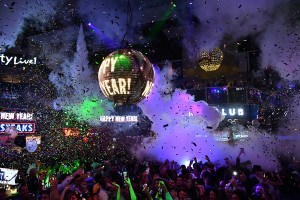REVIEW: Reliving the ‘60s with Catch-22 at Curio Theatre
Is this once-iconic satire still viable, or a historical curiosity? That is the question.

Doug Greene, Chase Byrd, Ashton Carter, and Sarah Knittel in Catch-22 at Curio Theatre Company
For its title alone, Catch-22 is assured immortality. Author Joseph Heller coined the term, defining a situation with mutually contradictory coordinates, from which there is no solution or escape. It was an idea that needed a word, and “Catch-22” has entered the lexicon.
As to the long-term viability of Heller’s iconic ‘60s satirical anti-war novel—or the film that Mike Nichols made of it in 1970, assembling one of the starriest casts ever—that’s more complicated.
Even more so is Heller’s own stage adaptation, written a year after the movie. Catch-22 the play has generally failed to find traction, and its effectiveness is likely to be a matter of taste. Some (including a large group in the audience at Curio Theatre Company the night I attended) will find its bite undiminished by time. Others will think of it as a historical, well, curio. I confess I’m more in the latter camp than the former.
But first, a word on the company. This remarkable West Philly group has for more than a decade offered imaginatively staged, sometimes redefining productions of worthy plays, acted with uncommon boldness and style. Curio is no secret in the arts community – recently, they won a Barrymore Award for theater education – but they should be better known across the board.
Curio’s virtues are well-displayed in Catch-22, cleverly designed (scenery by Paul Kuhn, lights by Amanda Jensen, costumes by Victoria Rose Bonito) and directed with brio by Claire Moyer. Chase Byrd plays Yossarian, a kind of fearful but cunning everyman figure, with appealing Midwestern openness and vulnerability. Byrd is very different casting from the film’s laconic Alan Arkin, and he’s very effective. The other actors—Aetna Gallagher, Doug Greene, Ashton Carter, Sarah Knittel, Merri Rashoyan—play multiple roles, skillfully switching accents, mannerism, and genders in an instant. The production has an impressive sense of cohesiveness, and its considerable wit is reason enough to see and enjoy Catch-22.
As for the work itself—well, as I said, reactions will likely be highly personal. Heller’s novel is a dizzying tour-de-force of narrative gamesmanship. Even he can’t quite telescope this into a two-hour evening, though paradoxically, Catch-22 the play also feels hyperextended. Heller provides ironic, funny dialogue, and some of the political points in this piece—set during World War II but meant to be metaphoric—remain sharply pertinent. A character quoting Calvin Coolidge’s “the business of America is business” brought forth much sardonic laughter, and the subplot of Officer Milo Minderbinder, a war-time profiteer, feels shockingly apt in the world of our current tragicomic regime.
But Catch-22‘s principal source of resonance—the Vietnam war—no longer carries the same sense of in-the-moment catastrophe, and Heller’s unsubtle absurdism feels creaky. Watching the show, I experienced a familiar heart-tugging feeling that I often get with works that seemed so vibrant and vital five-plus decades ago: that the ’60s indeed is the home to which you can’t go again.
Catch-22 plays through May 19. For more information, visit the Curio Theatre Company website.


